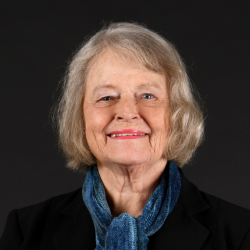Post-2015 goals include peace and ending child marriage
The High-Level Panel on the Post-2015 Development Agenda, appointed to design a framework to replace the Millennium Development Goals, released its report last week. Its recommendations include a goal on peace and security, and recognise child marriage as a key indicator of girls' and women's empowerment.
Last week saw an important milestone on the road to establishing a new global development framework to replace the eight Millennium Development Goals (MDGs) after they expire in 2015.
A high-level panel, appointed by UN Secretary-General Ban Ki-moon last year, published its recommendations on Thursday. Its report sets out twelve universal goals, which are more comprehensive than the MDGs and include goals on securing sustainable energy and good governance.
Peace is a cornerstone of development
Graça Machel, a member of the panel, wrote in January that the Millennium Development Goals had failed to address the way conflict and insecurity undermine efforts to improve health, education and prosperity. She said:
“No conflict-affected low-income country has achieved a single MDG, reflecting the framework’s failure to address problems caused by organised violence and insecurity effectively...
“In a world roiled by conflict, development efforts will always fall short. The post-2015 global development agenda must take a comprehensive approach, combining poverty-reduction measures with peace-building initiatives and strategies for economic transformation.”
The High-Level Panel report acknowledges this, suggesting the inclusion of a goal on ensuring stable and peaceful societies – and echoing Graca Machel’s argument that “development is impossible without peace, just as peace is impossible without development.”
Child marriage gaining recognition as key indicator
The report also includes ending child marriage as one of four possible indicators to measure progress towards the empowerment of girls and women.
Earlier this year Gro Harlem Brundtland, who was Director-General of the World Health Organization when the MDGs were devised, reflected on their “one glaring omission: the adolescent girl.” Improving child and maternal health, access to education and economic empowerment, she argued, is impossible when more than 14 million girls every year are married as children. She said:
“A country’s rate of child marriage is a clear indicator of the status of girls as well as its wider development. And, crucially, it is measurable... If we capture child marriage within the new development goals, we can build a new cycle of empowerment and opportunity.”
The Girls Not Brides partnership, founded in 2011 by The Elders, has also welcomed the inclusion of child marriage in the High-Level Panel report as a bold and crucial effort to address global poverty.
As the UN processes to establish new development goals evolve in the coming months, The Elders will continue to follow the conversation and to support the engagement of civil society, including grassroots women and youth groups, in defining the contours of tomorrow’s international development framework.

